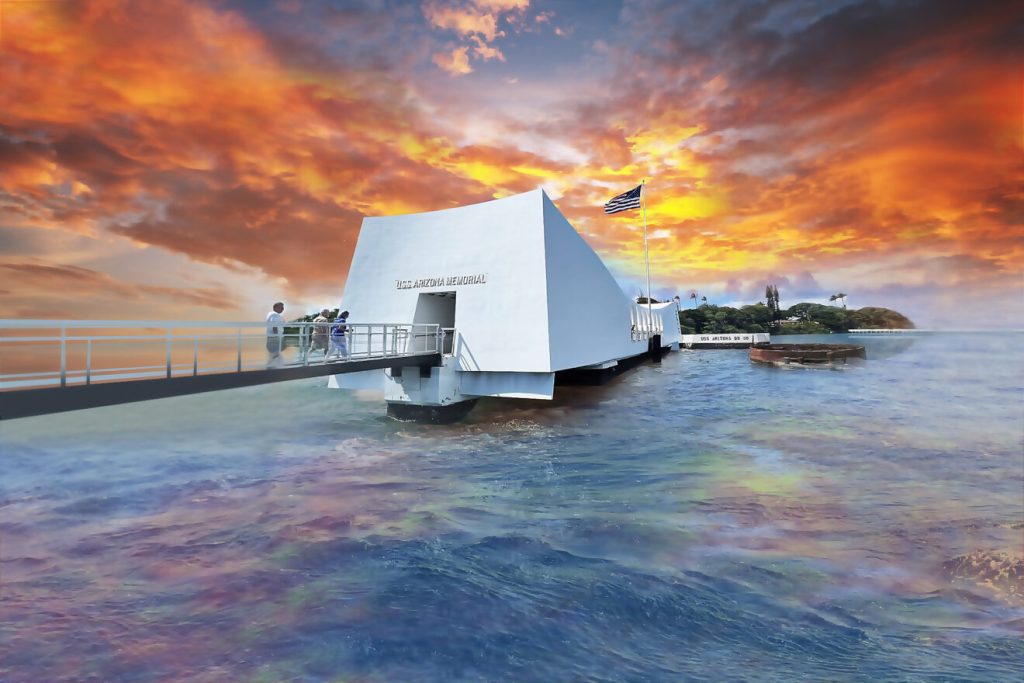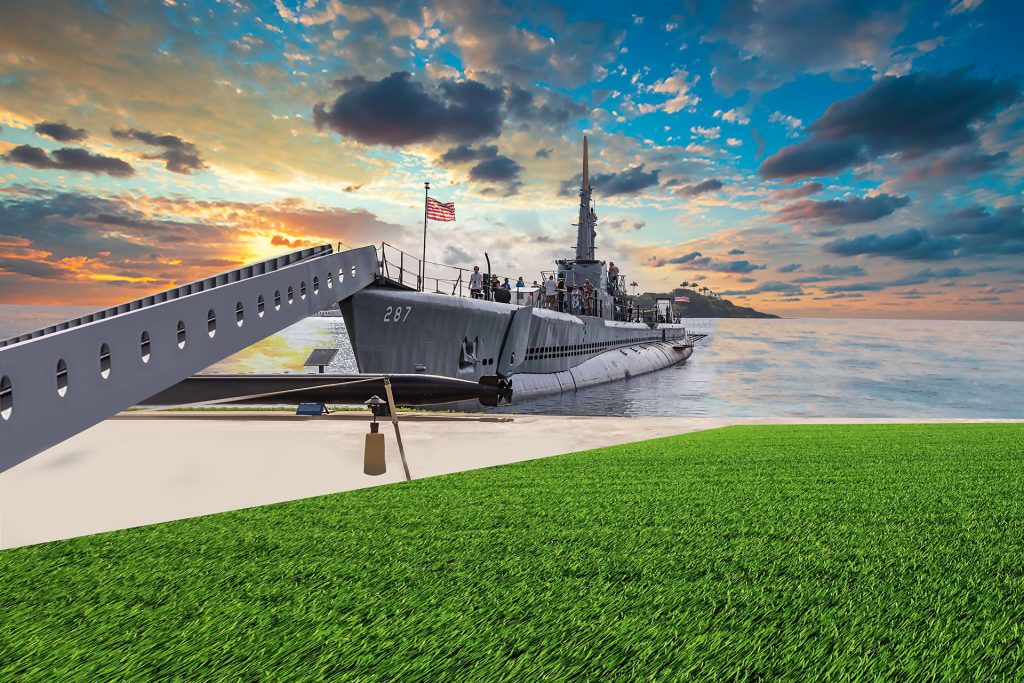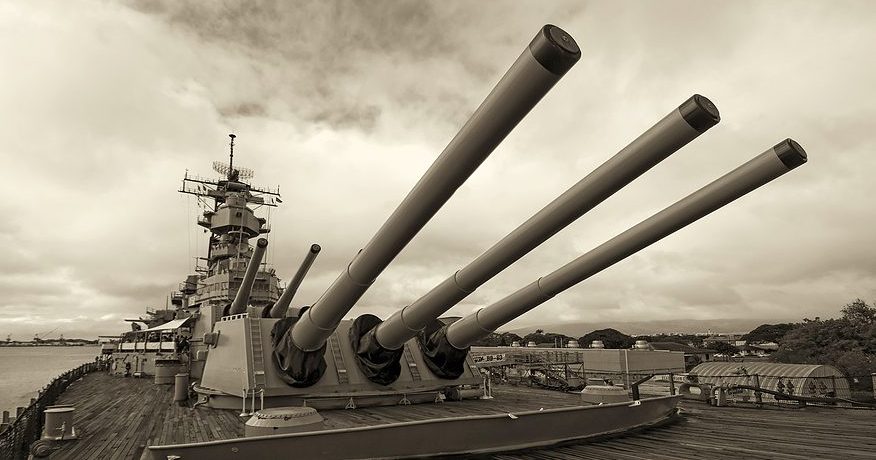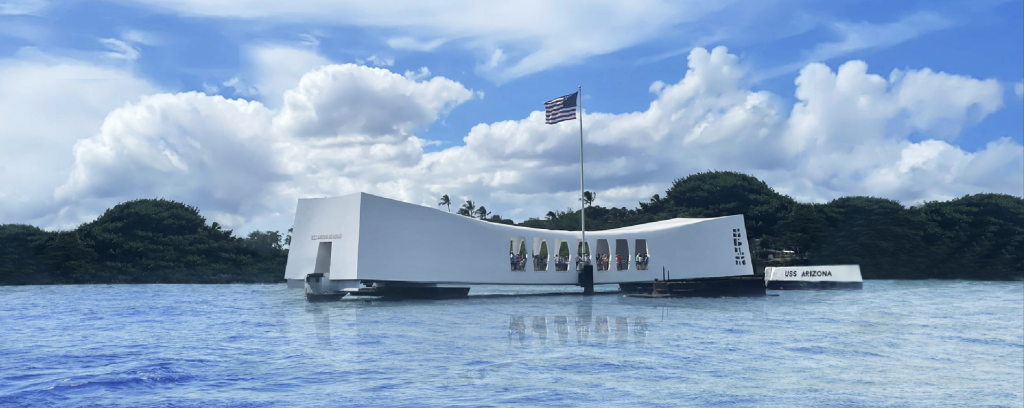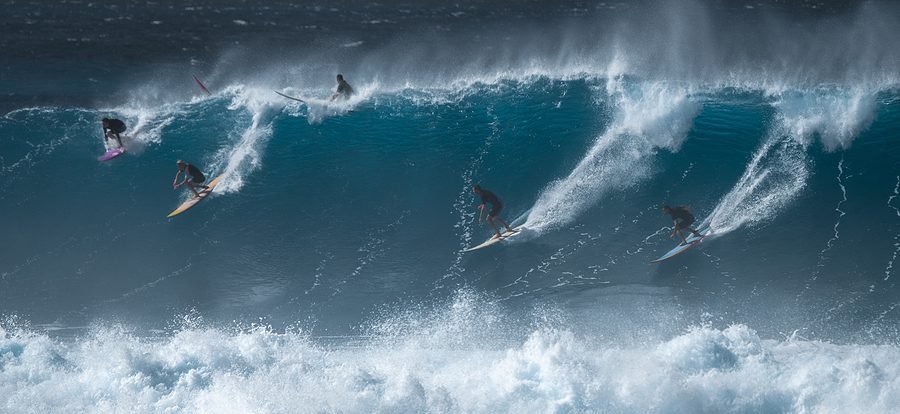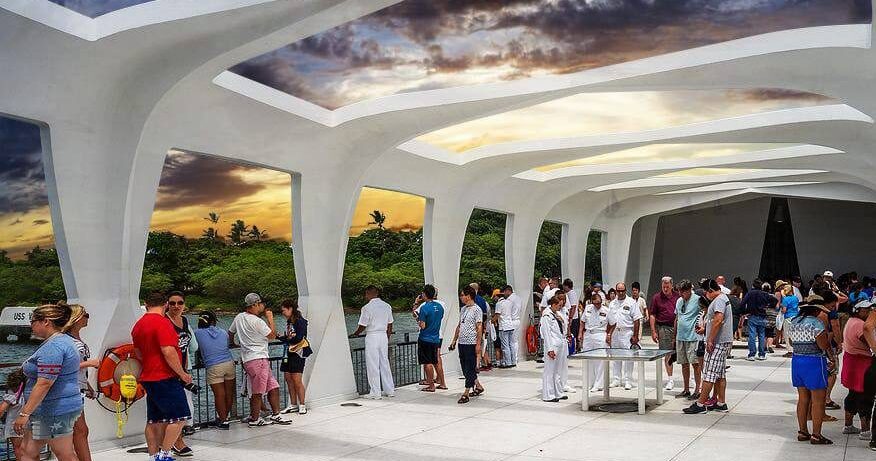Volcanoes National Park: Exploring Hawaii's Fiery Heart
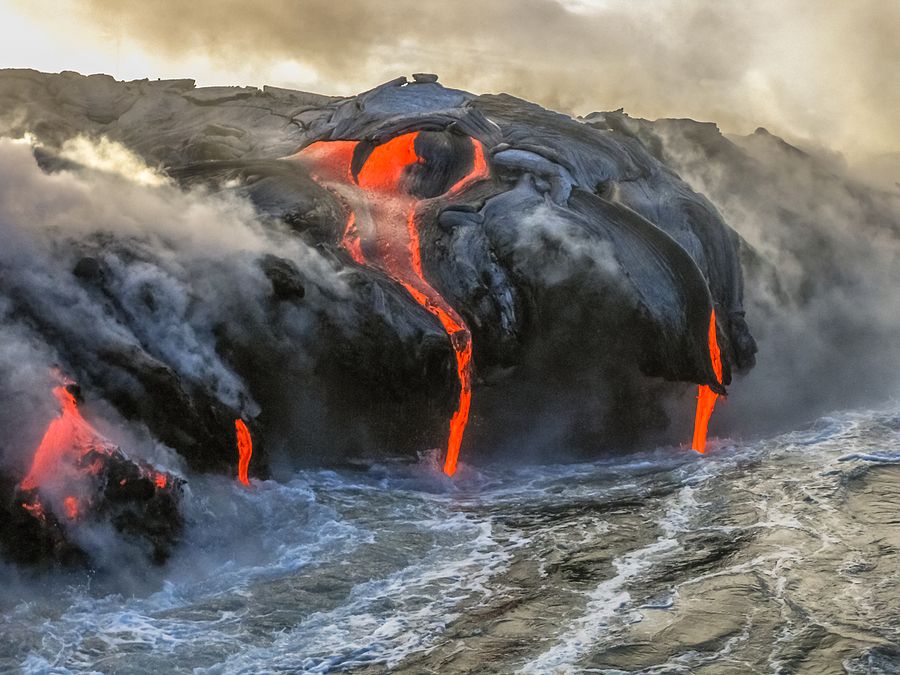
Kilauea Volcano in Hawaii Volcanoes National Park, also known Kilauea Smile because from 2016 seems to smile, erupting lava into Pacific Ocean, Big Island. Scenic sea view by boat.
Introduction: A Land Born of Fire
Few places on Earth capture the raw power and majesty of nature like Volcanoes National Park on Hawaii's Big Island. Home to two of the world's most famous volcanoes—Kilauea and Mauna Loa—this park is a dynamic landscape where the forces of creation are on full display. From molten lava flows and steaming vents to lush rainforests and otherworldly craters, Volcanoes National Park offers an awe-inspiring glimpse into the geologic processes that shaped not only Hawaii but also the Earth itself.
Whether you're an adventure seeker, a nature enthusiast, or simply curious about one of Hawaii's most iconic landmarks, Volcanoes National Park promises an experience that's as unforgettable as it is unique.
A World of Geologic Wonders
Kilauea: The World's Most Active Volcano
Kilauea is one of the most active volcanoes on the planet, erupting regularly since 1983 until its most recent eruption in 2018. The sight of lava spilling into the ocean, creating clouds of steam and new land, has drawn visitors from around the globe. Even when dormant, Kilauea's vast caldera and its smoking Halema'uma'u Crater provide a dramatic reminder of its volcanic might.
Mauna Loa: The Giant of the Earth
Mauna Loa, the largest volcano on Earth by volume, towers over the island with a summit that stretches nearly 13,681 feet above sea level (and over 33,500 feet from its base on the ocean floor). Its sheer size is humbling, and its broad slopes are a testament to the power of shield volcanoes. Hiking trails lead adventurous visitors to its summit, where panoramic views reveal the vastness of this geological giant.
Highlights of Volcanoes National Park
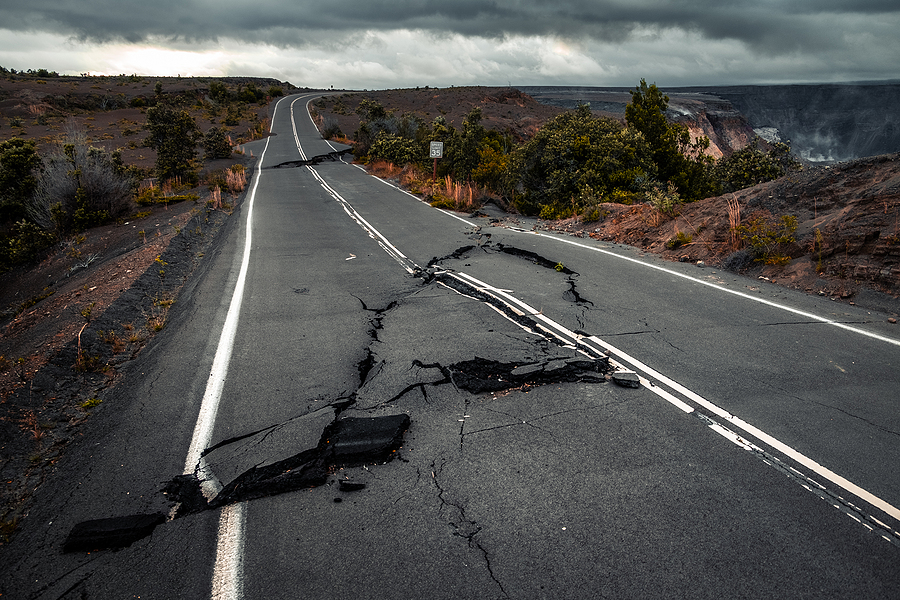
Damaged asphalt road (Crater Rim Drive) in the Hawaii Volcanoes National Park after earthquake and eruption of Kilauea (fume at upper right) volcano in May 2018, Big Island, Hawaii
1. Crater Rim Drive
Crater Rim Drive is a must-see for first-time visitors. This scenic road takes you around the edge of Kilauea Caldera, offering incredible views of its steaming vents, rugged landscapes, and the park's unique features. Along the way, you'll find several must-visit stops:
Steam Vents: Feel the heat rising from the Earth as steam escapes from cracks in the ground.
Kilauea Overlook: Enjoy a panoramic view of the massive caldera, a dramatic landscape that's constantly changing.
Sulphur Banks: This surreal area, with its colorful mineral deposits and pungent sulfur smell, reveals the chemistry of volcanic activity.
2. Thurston Lava Tube
Step into the past with a walk through the Thurston Lava Tube (Nāhuku), a subterranean tunnel formed by flowing lava thousands of years ago. Lush ferns and towering trees surround the tube's entrance, creating an enchanting atmosphere. Once inside, you'll marvel at the smooth walls and eerie stillness, a stark reminder of the immense heat and power that once flowed through this space.
3. Chain of Craters Road
Stretching 19 miles from Kilauea's summit to the coast, Chain of Craters Road is a journey through time and lava. Along the way, you'll encounter ancient lava fields, sea cliffs, and petroglyphs left by Hawaii's early inhabitants. The road ends where lava flows have covered it, a dramatic testament to the volcano's ongoing activity.
4. Devastation Trail
This short, easy trail offers a glimpse into the aftermath of Kilauea's 1959 eruption. The trail takes you through a landscape of cinders and charred trees, providing a stark contrast to the lush vegetation surrounding it. Interpretive signs along the path explain the dramatic changes caused by the eruption.
5. Halema'uma'u Crater
At the heart of Kilauea Caldera lies Halema'uma'u Crater, a place of profound cultural and geological significance. According to Hawaiian mythology, this crater is home to Pele, the goddess of fire and volcanoes. Visitors can view the crater from a safe distance, and during periods of activity, the sight of glowing lava is a mesmerizing experience.
A Haven for Nature and Culture
Unique Ecosystems
Despite its rugged terrain, Volcanoes National Park is teeming with life. From lush rainforests to barren lava fields, the park is home to a variety of ecosystems that support rare and endemic species. Keep an eye out for Hawaiian geese, Hawaii's state bird (nēnē), and the ōhi'a lehua flowers that thrive in the volcanic soil.
Hawaiian Culture
Volcanoes National Park is not just a geological wonder—it's also a place of deep cultural significance. For Native Hawaiians, the volcanoes are sacred, and the park offers an opportunity to learn about their traditions and spiritual connection to the land. The Kilauea Visitor Center features exhibits on Hawaiian culture, including the legends of Pele and the traditional uses of native plants.
Activities for Every Visitor
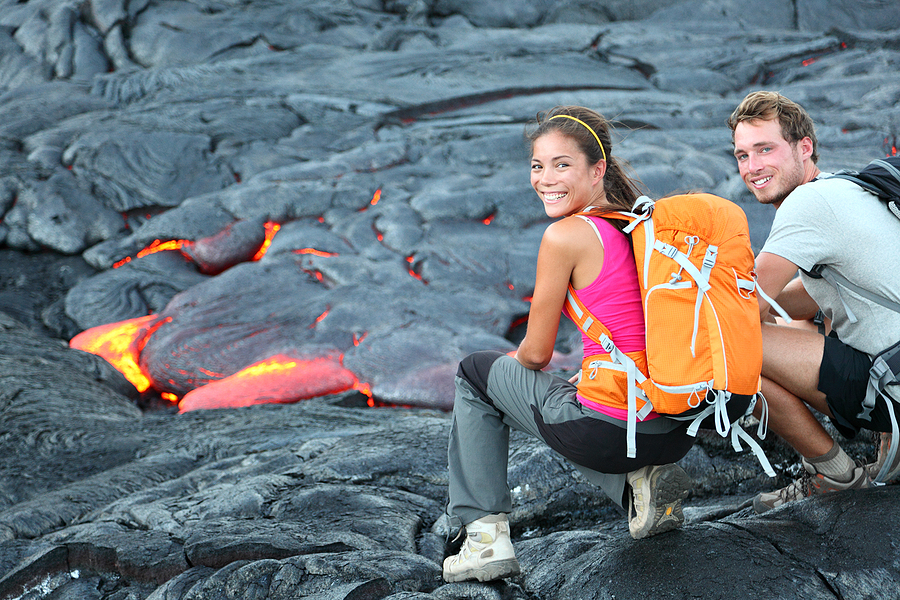
Hawaii lava tourist on hike. Tourists hiking near flowing lava from Kilauea volcano around Hawaii volcanoes national park, USA. Multiethnic couple.
Hiking
With over 150 miles of trails, Volcanoes National Park offers hikes for every level of adventurer. Whether you're exploring the short Kīpukapuaulu Trail or embarking on the challenging trek to Mauna Loa's summit, the park's trails showcase its diverse landscapes and geological wonders.
Stargazing
The park's remote location and high elevation make it an ideal spot for stargazing. On clear nights, the Milky Way shines brightly, and visitors can see constellations and planets with stunning clarity.
Ranger Programs
Join a park ranger for guided walks, talks, and educational programs that provide deeper insights into the park's geology, ecology, and cultural significance. These programs are a great way to enhance your visit and learn from the experts.
Tips for Visiting Volcanoes National Park
Dress in Layers: The weather can vary greatly within the park, so wear layers to stay comfortable.
Bring Water and Snacks: Some areas of the park are remote, so come prepared with provisions.
Wear Sturdy Shoes: Trails often traverse uneven terrain, so sturdy footwear is essential.
Check for Updates: Volcanic activity can cause road closures and changes to trails, so check the park's website or visitor center for the latest information.
Why Visit Volcanoes National Park?
A Front-Row Seat to Creation
There are few places in the world where you can witness the raw power of the Earth in action. Volcanoes National Park offers a front-row seat to the forces that created the Hawaiian Islands, providing a humbling and inspiring experience.
A Unique Blend of Nature and Culture
From its dynamic landscapes to its rich cultural heritage, the park offers a unique blend of natural beauty and Hawaiian traditions. It's a place where science and spirituality intersect, creating a truly enriching experience.
Adventure for All Ages
Whether you're hiking through a lava tube, marveling at the views from Crater Rim Drive, or simply enjoying the park's serene beauty, there's something for everyone at Volcanoes National Park.
Conclusion: A Must-Visit Hawaiian Destination
Volcanoes National Park is a place like no other—a land of fire and wonder that tells the story of Hawaii's creation. Its dramatic landscapes, rich biodiversity, and cultural significance make it a must-visit destination for anyone traveling to the Big Island. Whether you're gazing into the depths of a volcanic crater, exploring ancient lava flows, or learning about Hawaiian traditions, your time at Volcanoes National Park will be an unforgettable journey into the heart of Hawaii.
Mauna Kea: A Celestial Adventure Above the Clouds
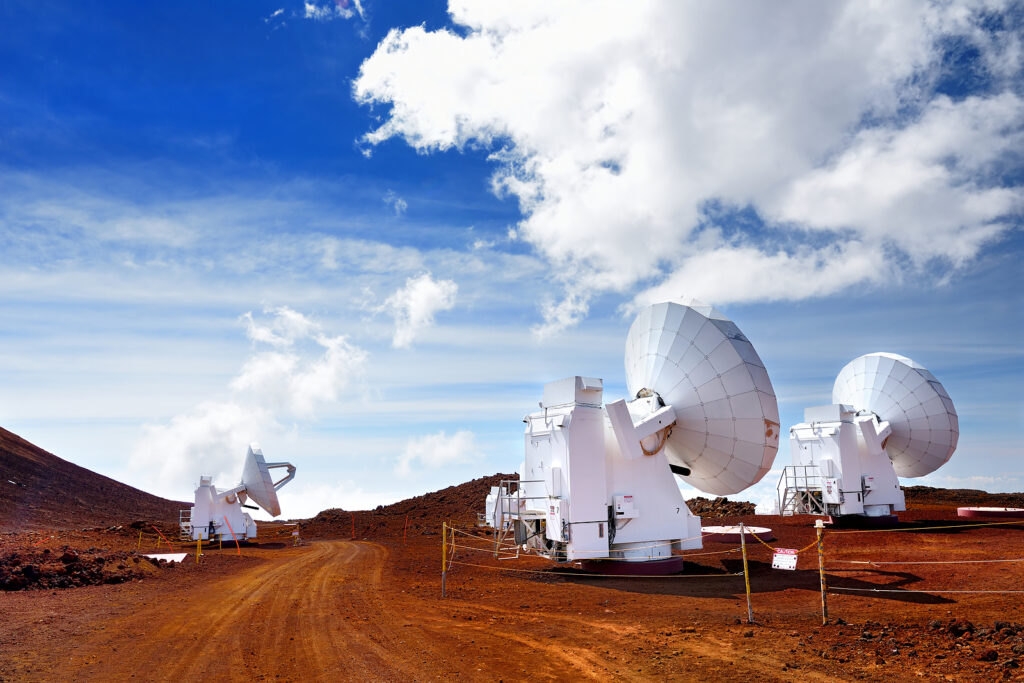
Observatories on top of Mauna Kea mountain peak. Astronomical research facilities and large telescope observatories located at the summit of Mauna Kea on the Big Island of Hawaii United States
Introduction: Hawaii's Towering Treasure
Rising majestically over the Big Island of Hawaii, Mauna Kea is more than just a mountain; it is a place of profound natural beauty, cultural significance, and scientific discovery. Towering at 13,796 feet above sea level and over 33,500 feet from its base on the ocean floor, Mauna Kea is the tallest mountain on Earth when measured from its base. Its summit often sits above the clouds, offering unparalleled views of the heavens and the island below.
Mauna Kea is a destination that promises an unforgettable adventure, combining stargazing, hiking, and a deep connection to the Hawaiian spirit of aloha 'āina—love and respect for the land. Whether you're an outdoor enthusiast, an astronomy lover, or a cultural explorer, Mauna Kea is a must-visit destination on your Hawaiian journey.
The Significance of Mauna Kea
A Sacred Mountain
To Native Hawaiians, Mauna Kea (Mauna a Wākea, or "Mountain of Wākea") is a sacred place. It is believed to be the home of the gods and a connection between Earth and the heavens. The mountain holds cultural and spiritual significance as a site of prayer, meditation, and ceremonies. Visitors are encouraged to approach Mauna Kea with respect and reverence, acknowledging its importance to Hawaii's people and traditions.
A Global Scientific Hub
Mauna Kea's summit is home to some of the world's most advanced astronomical observatories. Its high elevation, dry climate, and lack of light pollution make it one of the best places on Earth for stargazing and space exploration. The observatories have contributed to groundbreaking discoveries, deepening our understanding of the universe.
Adventures on Mauna Kea
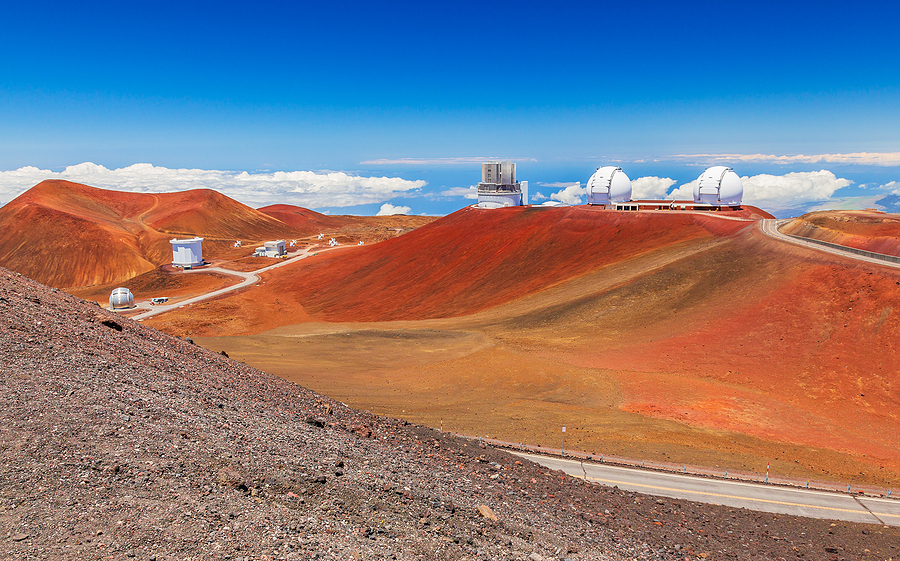
Hilo, Hawaii (The Big Island). Mauna Kea Summit Observatories.
1. Summit Tours: Reaching for the Stars
A trip to Mauna Kea's summit is a breathtaking experience, both figuratively and literally. The journey begins at the Mauna Kea Visitor Information Station, located at 9,200 feet, where visitors can acclimate to the altitude and learn about the mountain's significance.
Guided tours are the best way to explore the summit, as they provide access to restricted areas and include expert narration about the mountain's geology, ecology, and cultural heritage. Once at the top, you'll be greeted by panoramic views that stretch across the island, revealing the Pacific Ocean, neighboring peaks, and, on clear days, even Maui's Haleakalā.
Pro Tip: Due to the high altitude, visitors with certain health conditions or children under 16 are advised against traveling to the summit. Always consult with guides and follow safety recommendations.
2. Stargazing: A Celestial Show
Mauna Kea's dark skies and high altitude create ideal conditions for stargazing, attracting astronomy enthusiasts from around the world. The Mauna Kea Visitor Information Station hosts nightly stargazing programs, complete with telescopes and knowledgeable guides who point out constellations, planets, and distant galaxies.
The sight of the Milky Way arching across the sky, free from the interference of city lights, is awe-inspiring. Visitors often describe it as a humbling and spiritual experience, reminding us of our place in the universe.
3. Hiking on Mauna Kea
For those seeking a physical challenge, hiking the Mauna Kea Trail (Humuʻula Trail) to the summit is an adventure of a lifetime. The trail spans 6 miles one way, ascending over 4,500 feet through rugged terrain. The hike is strenuous and requires careful planning, but the reward is a sense of accomplishment and views that defy description.
Hikers should be prepared for high-altitude conditions, cold temperatures, and limited oxygen. Proper gear, hydration, and acclimatization are essential for a safe and enjoyable trek.
4. Exploring Lake Waiau
Located near the summit, Lake Waiau is one of the highest alpine lakes in the United States. This small, sacred lake is a site of cultural importance, linked to Hawaiian legends and ceremonies. A short hike from the summit to the lake is a tranquil and unexpected oasis amidst Mauna Kea's barren landscapes.
The Flora and Fauna of Mauna Kea
Despite its harsh conditions, Mauna Kea is home to unique ecosystems and species. At lower elevations, you'll find native forests of koa and ʻōhiʻa lehua trees, which provide habitat for endangered Hawaiian birds like the ʻiʻiwi, ʻapapane, and ʻelepaio. Higher up, the mountain's volcanic slopes are dotted with hardy plants like the māmane and naio, adapted to survive in extreme environments.
The summit is a stark, otherworldly terrain, where life is sparse but resilient. Here, you'll find species like the wēkiu bug, an insect that has adapted to thrive in the cold, rocky environment.
Tips for Visiting Mauna Kea

Tourist admiring breathtaking sunset views from the Mauna Kea a dormant volcano on the Island of Hawaii. The peak of Mauna Kea peak is the highest point in the state of Hawaii.
Plan Ahead
Check Conditions: Weather and road conditions can change rapidly on Mauna Kea. Always check updates before your visit.
Book a Tour: Guided tours are highly recommended for summit access, safety, and a more informative experience.
Acclimate: Spend time at the Visitor Information Station to acclimate to the altitude before heading higher.
Dress Appropriately
The temperatures on Mauna Kea can drop below freezing, even during the day. Dress in layers, including a warm jacket, gloves, and a hat. Sturdy footwear is essential for walking on uneven terrain.
Respect the Land
Mauna Kea is a sacred place. Visitors are encouraged to tread lightly, stay on designated paths, and refrain from disturbing cultural sites or leaving trash behind.
Why Visit Mauna Kea?
Unparalleled Natural Beauty
Mauna Kea's landscapes are diverse and breathtaking, from its lush lower slopes to its rocky summit. The views alone make it one of the most photogenic and awe-inspiring destinations in Hawaii.
A Spiritual and Cultural Connection
Mauna Kea offers a chance to connect with Hawaii's cultural heritage and learn about the deep spiritual significance of the land. It's a place where stories and traditions come to life, enriching your understanding of the islands and its people.
A Gateway to the Universe
For astronomy enthusiasts, Mauna Kea is a dream come true. Its summit provides access to the heavens, offering stargazing opportunities and insights into the cutting-edge research being conducted at its observatories.
Adventure and Discovery
Whether hiking to the summit, exploring Lake Waiau, or marveling at the night sky, Mauna Kea is a destination that feeds your sense of adventure and curiosity.
Conclusion: Mauna Kea Awaits
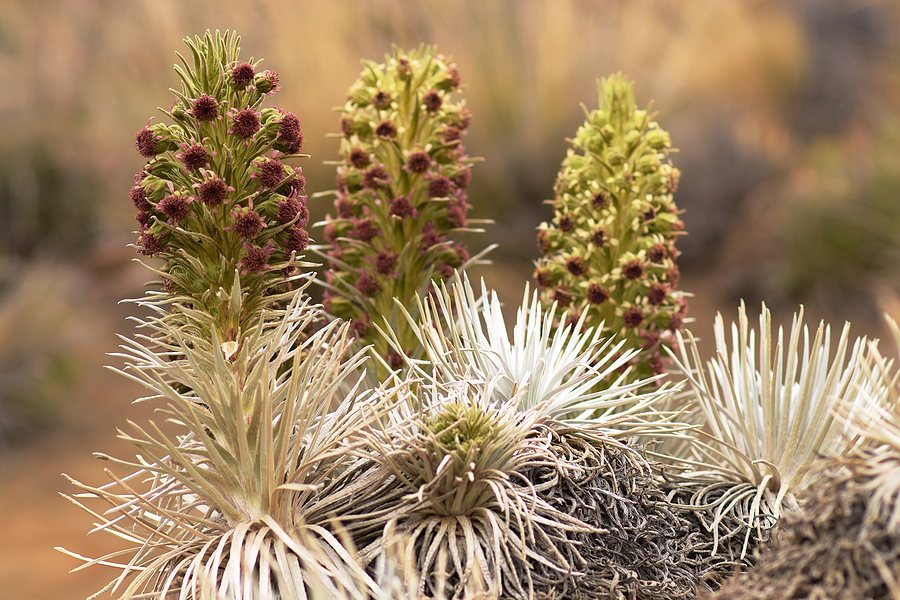
Mauna Kea silversword, on the slopes of Mauna Kea on the Big Island, Hawaii
Mauna Kea is more than a mountain—it's a journey into the heart of Hawaii's natural and cultural treasures. Its majestic summit, pristine night skies, and deep cultural significance make it a must-visit destination for travelers to the Big Island.
Whether you come for the stargazing, the hiking, or the opportunity to stand on top of the world, Mauna Kea promises an experience that will leave you inspired, humbled, and forever connected to the beauty of Hawaii. Prepare to embark on an adventure like no other and let Mauna Kea's magic take your breath away.
Pu'uhonua o Hōnaunau National Historical Park: A Sanctuary of Hawaiian Heritage
Introduction: Stepping Back in Time
Nestled along the rugged coast of Hawaii's Big Island, Pu'uhonua o Hōnaunau National Historical Park offers visitors a rare glimpse into the ancient world of Hawaii. Known as the "Place of Refuge," this sacred site was once a sanctuary for those who broke kapu (sacred laws) or sought safety during times of conflict. Today, the park serves as a beautifully preserved window into Hawaiian history, culture, and spirituality.
For travelers looking to connect with the authentic spirit of Hawaii, Pu'uhonua o Hōnaunau is an unforgettable destination. Its serene landscapes, historical significance, and cultural richness make it a must-visit for anyone exploring the Big Island.
The Historical Significance of Pu'uhonua o Hōnaunau
A Sacred Place of Refuge
In ancient Hawaii, the kapu system governed all aspects of life, dictating everything from religious practices to daily routines. Breaking a kapu was considered a serious offense, often punishable by death. However, those who could reach a pu'uhonua (place of refuge) were granted forgiveness and protection. These sanctuaries were sacred spaces overseen by priests and offered a second chance to those who sought refuge.
Pu'uhonua o Hōnaunau was one of the most prominent places of refuge in Hawaii, providing safety not only for lawbreakers but also for defeated warriors, noncombatants, and those fleeing persecution. The sanctity of this place was respected by all, making it a beacon of hope and peace in tumultuous times.
Royal Grounds and Religious Significance
Adjacent to the pu'uhonua are the Royal Grounds, where Hawaiian ali'i (chiefs) lived and conducted ceremonies. This area was a center of political and religious activity, with structures such as the Hale o Keawe heiau (temple) housing the bones of chiefs, believed to hold immense spiritual power.
The park's sacredness extends beyond its historical functions, as it continues to be a place of cultural reverence for Native Hawaiians.
Exploring the Park: Highlights and Experiences
Pu'uhonua o Hōnaunau National Historical Park spans over 180 acres of stunning coastal landscapes, dotted with ancient structures, cultural landmarks, and natural beauty. Here's what you can expect to see and do during your visit:
1. The Great Wall
One of the most striking features of the park is the Great Wall, a massive stone structure measuring 10 feet high and 17 feet thick. Built without mortar, the wall once separated the Royal Grounds from the pu'uhonua. Its craftsmanship and durability stand as a testament to the ingenuity of ancient Hawaiian builders.
2. Hale o Keawe Heiau
The Hale o Keawe heiau is a reconstructed temple that once served as a mausoleum for the bones of Hawaiian chiefs. Surrounded by wooden images of guardian spirits known as ki'i, the heiau is a powerful reminder of the spiritual beliefs that shaped Hawaiian society.
3. Canoe Landing and Fishponds
Along the park's shoreline, you'll find a canoe landing area and ancient fishponds. These features highlight the resourcefulness of Hawaiians in utilizing natural resources for sustenance and transportation. The fishponds, in particular, are an excellent example of traditional aquaculture practices that sustained communities for centuries.
4. Ki'i Figures
Scattered throughout the park are wooden ki'i, intricately carved statues representing Hawaiian gods and spiritual figures. These striking sculptures add an air of mystery and reverence to the landscape, inviting visitors to reflect on the spiritual significance of the area.
5. Coastal Trails and Natural Beauty
The park's coastal trails offer breathtaking views of the Pacific Ocean and the surrounding lava fields. The contrast between the black lava rocks, turquoise waters, and lush greenery creates a picturesque setting that's perfect for photography and quiet contemplation.
Activities and Experiences
Ranger-Led Programs
Pu'uhonua o Hōnaunau offers a variety of ranger-led programs designed to educate visitors about Hawaiian history, culture, and natural resources. These programs often include storytelling, traditional practices, and insights into the park's unique features.
Cultural Demonstrations
Throughout the year, the park hosts cultural demonstrations showcasing traditional Hawaiian crafts and skills, such as weaving, kapa (bark cloth) making, and wood carving. These hands-on activities provide a deeper appreciation for the artistry and knowledge of Hawaii's ancestors.
Snorkeling and Tide Pools
While the park itself is a historical site, the surrounding waters are teeming with marine life. Just outside the park boundaries, you'll find excellent snorkeling spots and tide pools brimming with colorful fish, sea turtles, and coral formations. This adds a refreshing and adventurous element to your visit.
Tips for Visiting Pu'uhonua o Hōnaunau
Plan Ahead
The park is open daily, but it's a good idea to check the National Park Service website for updates on hours, events, and any closures. Arriving early in the day allows you to explore before the crowds arrive and enjoy cooler temperatures.
Dress Comfortably
Wear comfortable walking shoes and lightweight clothing, as the park's trails traverse uneven terrain and the lava rocks can get hot under the sun. Bring sunscreen, a hat, and plenty of water to stay hydrated.
Respect the Sacredness
Pu'uhonua o Hōnaunau is a sacred site, so visitors are encouraged to show respect by staying on designated paths, refraining from climbing on structures, and maintaining a quiet demeanor in certain areas.
Bring a Camera
The park's stunning scenery and historical landmarks make it a photographer's paradise. Capture the beauty of the ki'i, the Great Wall, and the coastal vistas, but be mindful of signage that may restrict photography in sacred areas.
Why Visit Pu'uhonua o Hōnaunau?
A Journey Through History
Pu'uhonua o Hōnaunau offers a unique opportunity to step back in time and experience the culture, traditions, and spirituality of ancient Hawaii. Walking among the sacred grounds and historical structures provides a deep connection to the land and its people.
A Place of Peace and Reflection
The park's serene ambiance and spiritual significance create a sense of peace and reverence. It's a place where visitors can slow down, reflect, and appreciate the beauty of Hawaiian heritage.
A Perfect Blend of Culture and Nature
From the historical landmarks to the stunning coastal scenery, Pu'uhonua o Hōnaunau combines cultural exploration with natural beauty. It's an ideal destination for history enthusiasts, nature lovers, and families looking for a meaningful Hawaiian experience.
Conclusion: A Must-Visit on the Big Island
Pu'uhonua o Hōnaunau National Historical Park is more than just a destination—it's a journey into the heart of Hawaii's past and a celebration of its enduring spirit. Whether you're exploring the ancient structures, learning about traditional practices, or simply enjoying the tranquility of the park, your visit will leave you with a deeper appreciation for the rich heritage of the islands.
As you plan your trip to the Big Island, make Pu'uhonua o Hōnaunau a priority. It's a place where history, culture, and natural beauty converge, offering an experience that's as inspiring as it is unforgettable.
Punalu'u Black Sand Beach: A Hawaiian Gem of Natural Wonder
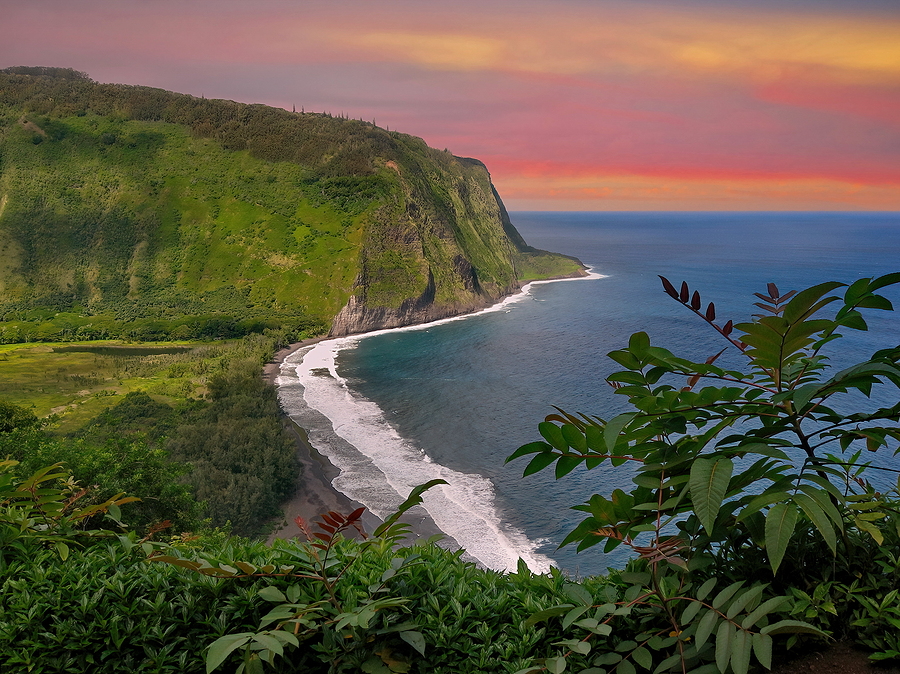
High Angle View of Punaluu Punaluu Black Sand Beach From the Cliffs Above on Big Island of Hawaii
Introduction: Hawaii's Black Sand Marvel
Nestled along the southeastern coast of Hawaii's Big Island, Punalu'u Black Sand Beach is a place of striking beauty and cultural significance. Famous for its jet-black sands, swaying palm trees, and crystal-clear waters, this unique destination offers visitors an unforgettable experience. Beyond its aesthetic appeal, Punalu'u is a haven for marine life, particularly the endangered Hawaiian green sea turtles (honu), which can often be seen basking on its shores.
Whether you're seeking breathtaking scenery, a connection to Hawaiian culture, or the chance to see rare wildlife up close, Punalu'u Black Sand Beach is a must-visit destination. Let's dive into what makes this beach one of Hawaii's most iconic attractions.
The Formation of Punalu'u's Black Sand
Punalu'u Black Sand Beach owes its distinctive appearance to the island's volcanic origins. The black sand is formed when molten lava from Mauna Loa or Kilauea flows into the ocean, rapidly cools, and shatters into tiny fragments. Over time, these fragments are carried ashore, creating the shimmering black sands that make Punalu'u so unique.
The dramatic contrast of the black sand against the turquoise waters and the vibrant green of the surrounding vegetation creates a surreal and otherworldly landscape that's perfect for photography and relaxation.
Highlights of Punalu'u Black Sand Beach
1. The Black Sands
The beach's dark sands are its most defining feature, providing a stunning visual contrast to the vibrant colors of the ocean and sky. Walking barefoot on the warm black sand is a sensory experience like no other. The sand retains heat from the sun, making it warm underfoot—a delightful sensation, especially during cooler mornings or evenings.
2. Hawaiian Green Sea Turtles (Honu)
One of Punalu'u's most beloved features is its population of Hawaiian green sea turtles. These endangered creatures can often be found resting on the warm sands or swimming gracefully in the shallows. Observing the turtles up close is a magical experience, but it's important to remember to keep a respectful distance of at least 10 feet to ensure their safety and well-being.
3. Tide Pools and Marine Life
The rocky coastline surrounding Punalu'u is home to tide pools teeming with marine life. Visitors can explore these pools to discover colorful fish, crabs, and other sea creatures. Snorkeling in the calm waters just offshore offers a chance to see even more marine biodiversity, though the occasional strong currents mean visitors should exercise caution.
4. Swaying Palm Trees
Lining the beach are rows of iconic coconut palms, their leaves rustling in the breeze. These trees not only enhance the beach's tropical charm but also provide welcome shade, making Punalu'u an ideal spot for a relaxing picnic or a peaceful nap under the Hawaiian sun.
5. Freshwater Springs
Punalu'u is also known for its freshwater springs, which bubble up beneath the surface of the ocean. Ancient Hawaiians relied on these springs for drinking water, and their historical significance adds another layer of intrigue to the beach's natural wonders.
Cultural Significance of Punalu'u
Punalu'u holds a special place in Hawaiian history and culture. The beach and its surrounding areas were once vital to ancient Hawaiian communities, providing fresh water, fish, and a place for gathering. The name "Punalu'u" means "spring diving" in Hawaiian, referring to the freshwater springs beneath the sea.
Visitors to Punalu'u are encouraged to approach the beach with aloha (respect) and malama 'aina (care for the land). These principles are central to Hawaiian culture and help ensure that the beach remains pristine for future generations.
Activities at Punalu'u Black Sand Beach
Relaxation and Picnicking
Punalu'u's tranquil atmosphere makes it a perfect place to unwind. Spread out a beach towel, listen to the soothing sound of the waves, and let the beauty of the black sand transport you to a state of pure relaxation. The beach's picnic tables and shaded areas provide a convenient spot to enjoy a meal with family or friends.
Snorkeling and Swimming
The waters at Punalu'u are home to a variety of marine life, making it an excellent spot for snorkeling. However, visitors should be aware of occasional strong currents and rocky areas. If you're not a confident swimmer, it's best to stay close to shore or explore the tide pools instead.
Exploring the Surrounding Area
Punalu'u is located near several other notable attractions on the Big Island, making it an excellent stop on a day of exploring. Visit the nearby Punalu'u Bake Shop for a taste of local pastries, or continue your journey to Hawaii Volcanoes National Park for a closer look at the island's volcanic landscapes.
Tips for Visiting Punalu'u Black Sand Beach
Arrive Early
Punalu'u is a popular destination, especially during peak tourist seasons. Arriving early ensures you'll have time to enjoy the beach before larger crowds arrive, and you may even catch the turtles basking in the morning sun.
Respect the Wildlife
The Hawaiian green sea turtles are protected under federal and state laws, so maintaining a respectful distance is crucial. Avoid touching, feeding, or disturbing the turtles, and admire them from afar.
Bring Essentials
The black sand retains heat, so wearing sandals or water shoes is a good idea. Don't forget sunscreen, a hat, and plenty of water, as the sun can be intense, especially in the middle of the day.
Leave No Trace
Help preserve the beauty of Punalu'u by practicing responsible tourism. Dispose of trash properly, stay on designated paths, and avoid taking any sand or rocks from the beach as souvenirs.
Why Visit Punalu'u Black Sand Beach?
A Unique Experience
Punalu'u Black Sand Beach is unlike any other beach you'll encounter in Hawaii. Its striking black sands, vibrant natural beauty, and abundance of wildlife create an experience that's as rare as it is memorable.
A Connection to Nature
Whether you're observing sea turtles, exploring tide pools, or simply soaking in the scenery, Punalu'u offers countless opportunities to connect with Hawaii's unique ecosystems.
A Glimpse into Hawaiian Culture
The beach's cultural significance and historical importance provide a deeper appreciation for the land and its people. Visiting Punalu'u is not just a visual treat but also a chance to learn about Hawaii's rich heritage.
Conclusion: A Must-See Destination on the Big Island
Punalu'u Black Sand Beach is a place of wonder, beauty, and cultural significance. From its shimmering black sands and swaying palm trees to its thriving marine life and historical legacy, it encapsulates the magic of Hawaii's Big Island. Whether you're relaxing on the shore, marveling at the sea turtles, or exploring the nearby attractions, a visit to Punalu'u is sure to leave you with memories that last a lifetime.
Make Punalu'u Black Sand Beach a highlight of your Hawaiian adventure and experience the unparalleled charm of this volcanic gem. It's a destination that truly has it all—natural beauty, cultural depth, and a sense of wonder that will stay with you forever.
Captain Cook Monument: A Journey Through History and Beauty
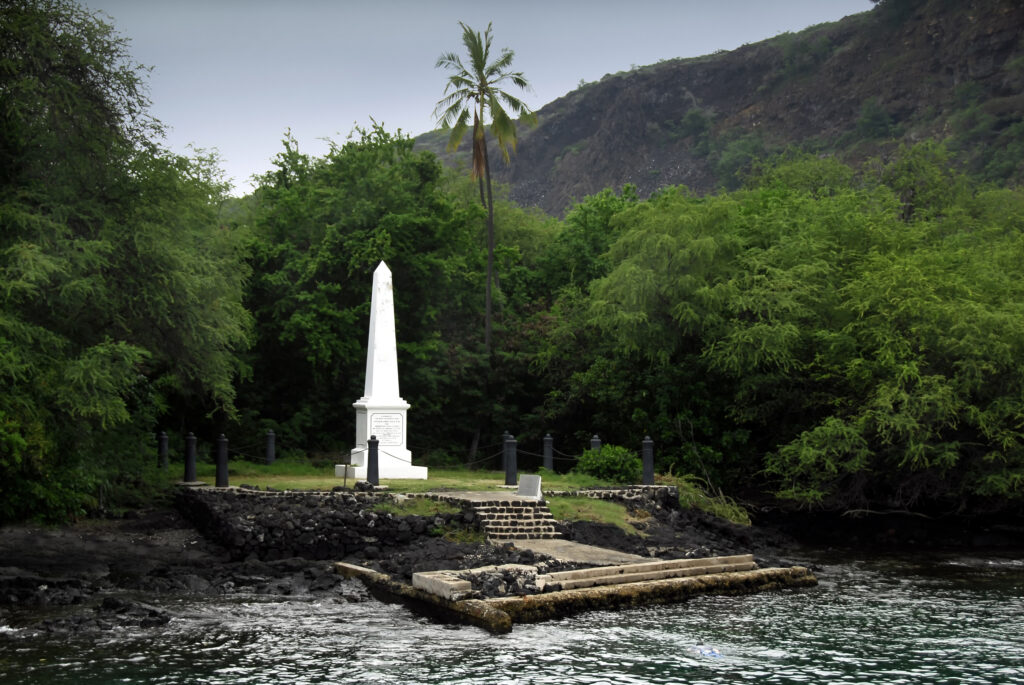
The Beautiful Captain Cook Monument On The Island Of Hawaii
Introduction: A Tribute to Exploration
Nestled along the rugged coastline of Hawaii's Big Island, the Captain Cook Monument stands as a tribute to one of history's most renowned explorers, Captain James Cook. Located at Kealakekua Bay, this iconic landmark marks the spot where Cook first landed in Hawaii in 1779 and, later, where his life tragically ended. Beyond its historical significance, the area is a haven of natural beauty, offering pristine waters, vibrant coral reefs, and opportunities for adventure.
Whether you're a history enthusiast, an ocean lover, or someone seeking a unique Hawaiian experience, a visit to the Captain Cook Monument promises a blend of culture, history, and breathtaking scenery.
The History Behind the Captain Cook Monument
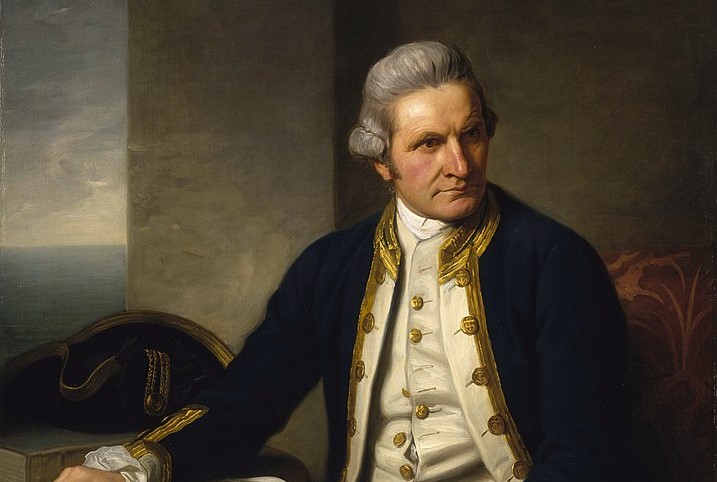
Portrait of Captain James Cook—renowned British explorer, navigator, and cartographer who mapped uncharted territories of the Pacific.
The Arrival of Captain Cook
In January 1778, Captain James Cook arrived at Kealakekua Bay during his third voyage of exploration. The timing of his arrival coincided with the Makahiki festival, a season of peace and plenty dedicated to the Hawaiian god Lono. Cook and his crew were initially welcomed as divine beings, a testament to the Hawaiians' rich cultural traditions and spiritual beliefs.
Tensions later arose between the two worlds. Culminating in a confrontation on February 14, 1779. During which Cook lost his life. Despite this tragic ending, Cook's time in Hawaii remains a significant chapter in the history of exploration and cultural exchange.
The Monument's Creation
The Captain Cook Monument stands on a small strip of land at Kealakekua Bay. The land surrounding the monument is considered British territory, a unique parcel within Hawaii. Accessible only by water or a challenging hike, the monument offers visitors a chance to reflect on the legacy of exploration and the cultural interactions that shaped Hawaii's history.
Getting to the Captain Cook Monument
1. By Boat or Kayak
The easiest and most popular way to reach the monument is by water. Guided boat tours and kayak rentals are available from nearby locations, offering a scenic journey across the turquoise waters of Kealakekua Bay. Along the way, you may spot spinner dolphins leaping in the waves or sea turtles gliding beneath the surface.
Kayaking to the monument provides a more intimate and active adventure. Paddlers can explore the bay at their own pace, taking in the stunning views of the surrounding cliffs and ocean.
2. Hiking the Ka'awaloa Trail
For the more adventurous, the Ka'awaloa Trail offers a challenging hike to the monument. The trail descends approximately 1,300 feet over 1.8 miles, winding through lava fields and offering spectacular views of the bay. While the hike down is relatively easy, the climb back up can be strenuous, so proper footwear, water, and preparation are essential.
Activities at Kealakekua Bay
Snorkeling and Marine Life
Kealakekua Bay is one of Hawaii's premier snorkeling destinations, and the waters around the Captain Cook Monument are teeming with marine life. The coral reefs are vibrant and healthy, home to an array of tropical fish, reefs, and even reef sharks. The bay's calm and clear waters make it ideal for snorkelers of all skill levels.
Snorkeling near the monument allows you to experience Hawaii's underwater paradise while surrounded by the dramatic cliffs of the bay.
Historical Reflection
The Captain Cook Monument serves as a place of reflection, inviting visitors to consider the complexities of cultural exchange and the impact of exploration. Informational plaques near the site provide context about Cook's voyages and his interactions with the Hawaiian people.
Photography and Scenic Beauty
With its dramatic cliffs, azure waters, and lush vegetation, Kealakekua Bay is a photographer's dream. The monument itself, with the bay as its backdrop, creates a striking composition that captures the essence of Hawaii's natural beauty and historical depth.
Tips for Visiting the Captain Cook Monument
Plan Ahead
If kayaking or hiking to the monument, ensure you have all necessary permits and are aware of local regulations. Guided tours are highly recommended for those unfamiliar with the area.
Respect the Environment
Kealakekua Bay is a protected marine conservation district. Visitors are encouraged to practice responsible tourism by not touching coral reefs, disposing of trash properly, and maintaining a respectful distance from wildlife.
Bring Essentials
Pack sunscreen, water, snacks, and snorkeling gear if you plan to explore the bay. For hikers, sturdy shoes and a hat are essential for the journey.
Why Visit the Captain Cook Monument?
A Blend of History and Nature
The Captain Cook Monument offers a rare combination of historical significance and natural splendor. It’s a place where you can delve into Hawaii’s past while immersing yourself in its stunning landscapes.
An Unforgettable Adventure
Whether you’re kayaking across the bay, hiking through lava fields, or snorkeling among vibrant coral reefs, a visit to the Captain Cook Monument is an adventure that engages the body, mind, and spirit.
A Deeper Connection to Hawaii
Exploring the monument and its surroundings provides a deeper understanding of Hawaii’s history, culture, and environment. It’s a chance to connect with the land and its stories in a meaningful way.
Conclusion: A Journey Worth Taking
The Captain Cook Monument is more than a historical marker—it’s a gateway to the beauty, history, and culture of Hawaii. From the journey to reach it to the experiences you’ll have at Kealakekua Bay, every moment spent here is a testament to the magic of the Big Island.
Whether you’re seeking adventure, reflection, or a deeper connection to Hawaii, the Captain Cook Monument promises an experience that will leave you inspired and enriched. Add it to your itinerary and discover why this iconic site continues to captivate visitors from around the world.

